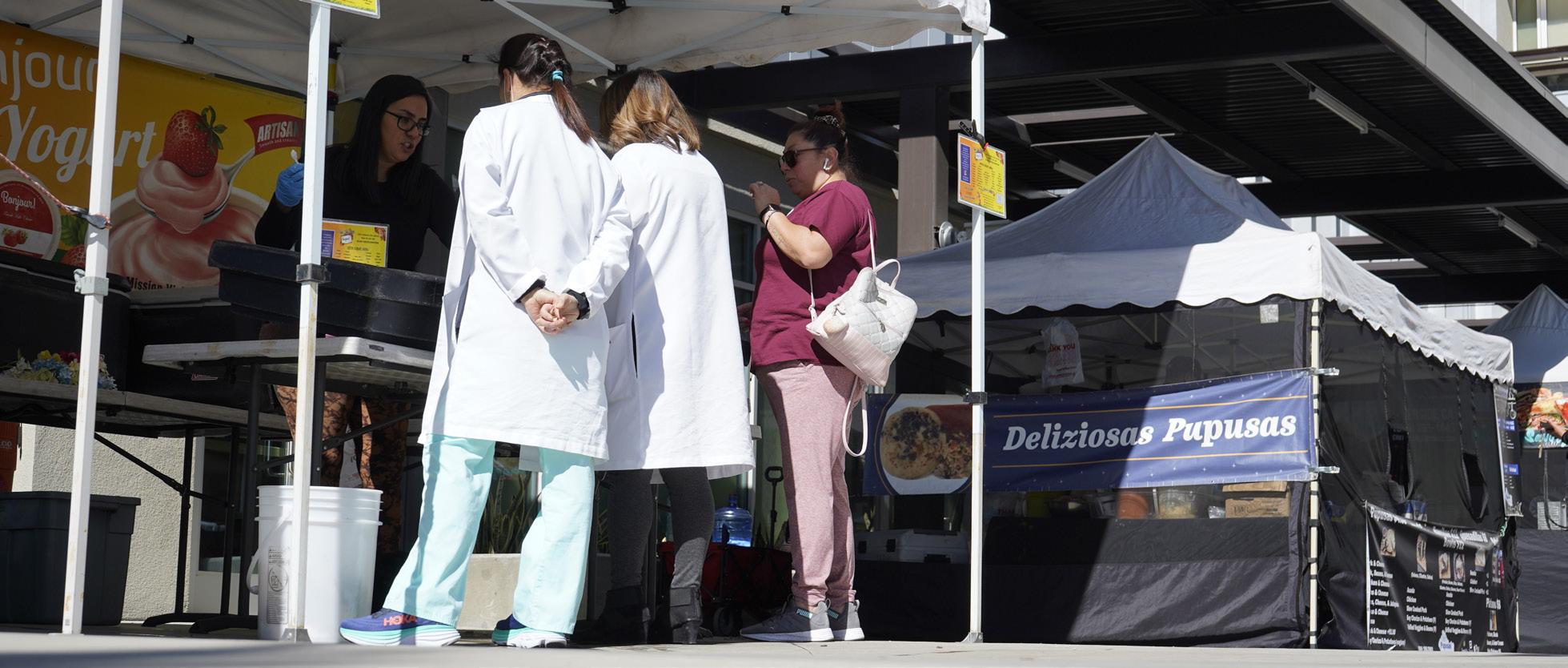
3 minute read
FOOD IS MEDICINE
In a rural corner of rural Mississippi in the 1960s, a physician pioneer named Dr. Jack Geiger opened one of the first community health centers in the nation. After meeting with the people in the local community, he identified high rates of severe malnutrition in the children and young adults. He came up with a radical idea: to prescribe them food. Dr. Geiger wrote out prescriptions for food to be used at local grocery stores; he asked the grocers to send the bill to his clinic pharmacy.
The federal agency that funded the health center (the Office of Economic Opportunity, later part of the Department of Health and Human Services) sent an official to stop Dr. Geiger and remind him that the allocated money could only be used for “medical” purposes and a pharmacy can only dispense medications. Dr. Geiger famously replied: “Well, the last time that I looked in my textbooks, the specific therapy for malnutrition was food.” Through his intervention and advocacy, Dr. Geiger and his team effectively ended malnutrition in the county they served. He built a prolific career based on championing the principles of social medicine: that a physician’s duty is to treat the whole person, beyond the four walls of the clinic, through community health action and advocacy.
Advertisement
It was this same idea that led to the development of the “Food is Medicine” program at RUHS Moreno Valley Community Health Center. Our initial plan was to implement a food prescription (Food Rx) model and partner with local farmer’s markets and grocery stores to connect our patients with low-cost fresh produce. But after the COVID-19 pandemic shut down many of those in-person opportunities, we listened to the needs of our patient community and pivoted to planning for direct food distribution from within our clinic space.

We began with a community needs assessment using the “Hunger Vital Signs,” a two-item validated screening tool for food insecurity. In the first months of the pandemic, over one-third of our clinic patients screened positive for food insecurity. This data reinforced the stories we heard from our patients: those people living in lower-income communities were at greatest risk of health disparities as a result of the COVID-19 pandemic. But these problems were not due to the virus alone; they were the consequences of generations of structural inequities and policies that created food deserts and lack of access to adequate nutrition.
In late 2021, our “Food is Medicine” program catapulted from idea to implementation through collaboration with RUHS Public Health. The CalFresh Healthy Living team, led by Valerie Comeaux, identified a community partner in Feeding America Riverside San Bernardino (FARSB) to deliver food boxes each month to our community health center. These food boxes contain shelf-stable goods such as beans, grains, pasta, milk, canned fruits and vegetables, and other nutrition support for our patients. Furthermore, Valerie and the RUHS Public Health team coordinated nutrition education classes to help patients and their families incorporate the contents of the food boxes into their healthy lifestyles.

This month marks the one-year anniversary of the “Food is Medicine” program at Moreno Valley Community Health Center. At the start of this journey, we were discouraged at the overwhelming volume of patients who initially screened positive for food insecurity in our clinic. Through the steady implementation of our program since last November, our community impact increased from a handful of brochures and referrals to over one-thousand food boxes distributed into the community.
I am deeply inspired by the entire team that supported this critical intervention, including our patients, community partners, clinic staff, and program volunteers. The “Food is Medicine” program truly reflects the whole-person approach to care championed throughout the RUHS network.
We further improve upon our existing program by listening to our partners at each stage of implementation. Based on the collective feedback of our patients and staff, we plan to expand the “Food is Medicine” program into our entire network of community health centers in the coming year. Our next steps include incorporating a delivery service (through a partnership with DoorDash) for patients with limited transportation options. In addition, we are coordinating with a community garden at UC Riverside to bring fresh produce to our patients who screen positive for food in- security.
Each of these innovations is buoyed by the expertise of the RUHS Public Health team; their perspective helps us find collaborative solutions that are community-based, practical, and sustainable for the future. We plan to utilize the resources of our RUHS Population Health teams to match these important nutrition interventions with health outcomes for chronic disease management.
The significant health disparities highlighted by the COVID-19 pandemic were the catalyst for implementing the “Food is Medicine” program. There are still major structural and policy changes necessary to improve access to healthy foods for the communities we serve. But with the momentum from this last year in addressing food insecurity, I am confident that our team will continue using the whole-person perspective to bend the arc towards health justice for our patients and their families.
In the last two months, the RUHS Family Medicine Residency Program interviewed over one-hundred fourthyear medical students for one of twelve internship positions for the next academic year. At the end of each interview, the students ask a series of questions that tend to blend together over time. But the question that I love is when a student asks why I choose to work at RUHS for the last eight years. The answer is simple: because everyone I work with believes deeply in our mission of treating both the patient and community, using the whole-person principles of social medicine.

